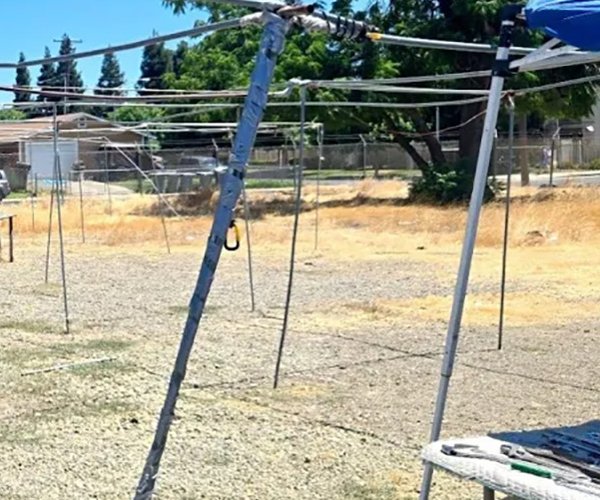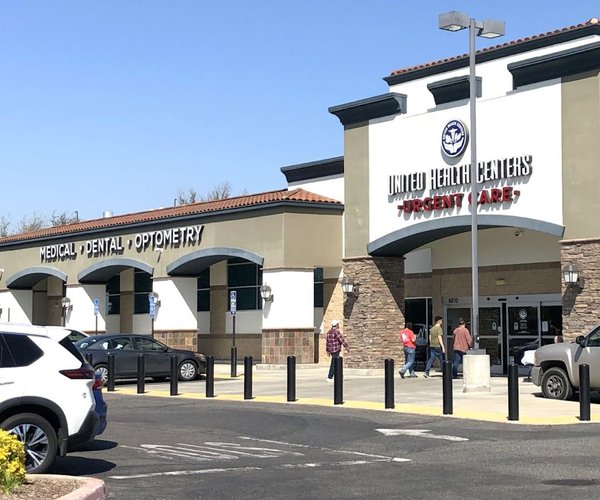Implementation of the Sustainable Groundwater Management Act in Turlock and surrounding communities is well under way, and the Turlock Groundwater Basin Association hosted two workshops Wednesday to update local community members about the process and how much progress has been made.
Under the SGMA, which was passed in 2014, all high and medium priority groundwater basins are required to form one or multiple groundwater sustainability agencies by June 30 as well as develop one or more groundwater sustainability plans within three to five years, depending on the condition of their basins.
“This is something that’s bringing together urban and agricultural folks to work together on making sure we have a sustainable supply of groundwater over the years,” said City of Turlock Director of Municipal Services Michael Cooke. “We’ve been working with a group of agencies for 20 years in our region on groundwater issues, and we decided to take the bull by the horns. It’s a local resource that we feel like we know how to manage locally, and work together as a diverse group to do that and implement the new state regulations.”
According to the Department of Water Resources, California’s groundwater provides approximately 30 to 46 percent of the state’s total water supply, depending on wet or dry years. Groundwater and surface water resources within the Turlock Groundwater Basin maintain and fulfill agricultural, domestic, municipal and industrial needs.
In January, the Stanislaus County Board of Supervisors adopted two agreements to form GSAs for the East Turlock and West Turlock subbasins. Since the Turlock groundwater basin is not considered to be in critical condition of overdraft, the agencies are allowed a five-year period in which they can develop a GSP.
In June, the East Turlock Subbasin – which includes the Ballico-Cortez Water District, City of Turlock, Eastside Water District, Merced Irrigation District, Merced County and Stanislaus County – began the process of forming its own GSA, which includes a seven-member Board of Directors comprised of different agency representatives.
As one of the public agencies with the West Turlock Subbasin, Turlock Irrigation District adopted a Joint Powers Agreement in November to begin the process of forming a GSA, along with the 12 other entities included in the subbasin: Ceres, Delhi County Water District, Denair Community Services District, Hickman (Waterford), Hilmar County Water District, Hughson, Keyes Community Services District, Modesto, Stevinson Water District, Turlock, Merced County and Stanislaus County.
According to Kevin Kauffman of the Eastside Water District, now that both GSAs have been formed, TGBA will move forward with developing a process for working together to develop one GSP to cover the entire Turlock subbasin. The plan must be submitted by Jan. 31, 2022, or else the State will intervene. In route to that milestone, the GSAs will have an ongoing responsibility of managing local groundwater resources to achieve sustainability, submitting annual progress reports to DWR and updating the GSP every five years.
“As long as we do what the State tells us to do, they’ll stay out of our business,” said Cooke. “If we don’t, the State can get involved and start regulating our groundwater.”
At the morning workshop held Wednesday, attendees were concerned about the amount of time it would take to develop GSPs for the subbasins.
“Why is it going to take until 2022?” asked one community member. “In five years, we could be completely depleted. Everyone knows what’s going on up in the hills – you’ve got 600 horse power wells pumping 24/7.”
Kauffman stated that he has spoken with geologists about any concerns that may arise during planning, and depletion was not an anticipated problem.
“I’m not aware of that concern,” said Kauffman. “From the geologists that I’ve talked to, no one is concerned about that; possibly on individual lots, but as an aquafer, no.”
The time that it takes to put a GSP together is actually very short, said TGBA Chair Debbie Liebersbach, with the plan consisting of ways to manage groundwater and addressing any undesirable results. However, a significant amount of information and analysis is required to determine the best path, she said, as well as education and outreach with the public.
“That’s a really short timeline to get that plan together,” said Liebersbach. “That said, if you do have concerns, part of the reason we’re having this is so you can start to identify which GSA you go to and tell them your concerns.”
TGBA discussed with stakeholders at the meeting the best practices for stakeholder outreach and preferred methods of engagement, such as attending GSA Board meetings and public workshops, email, social media and the TGBA website. Attendees were encouraged to fill out a Stakeholder Engagement Survey, where they could inform TGBA on how they typically receive information about SGMA and GSA work, as well as what type of information regarding the project is most important to them.
TGBA will continue to share work on groundwater management with stakeholders, and another workshop in June will be announced, said Liebersbach. To fill out the engagement survey, visit www.surveymonkey.com/r/TGBA, and for additional questions, email turlockgroundwater@gmail.com. Those interested can visit www.TurlockGBA.org for updates, and for general information on SGMA, go to www.water.ca.gov/groundwater/sgm/.









